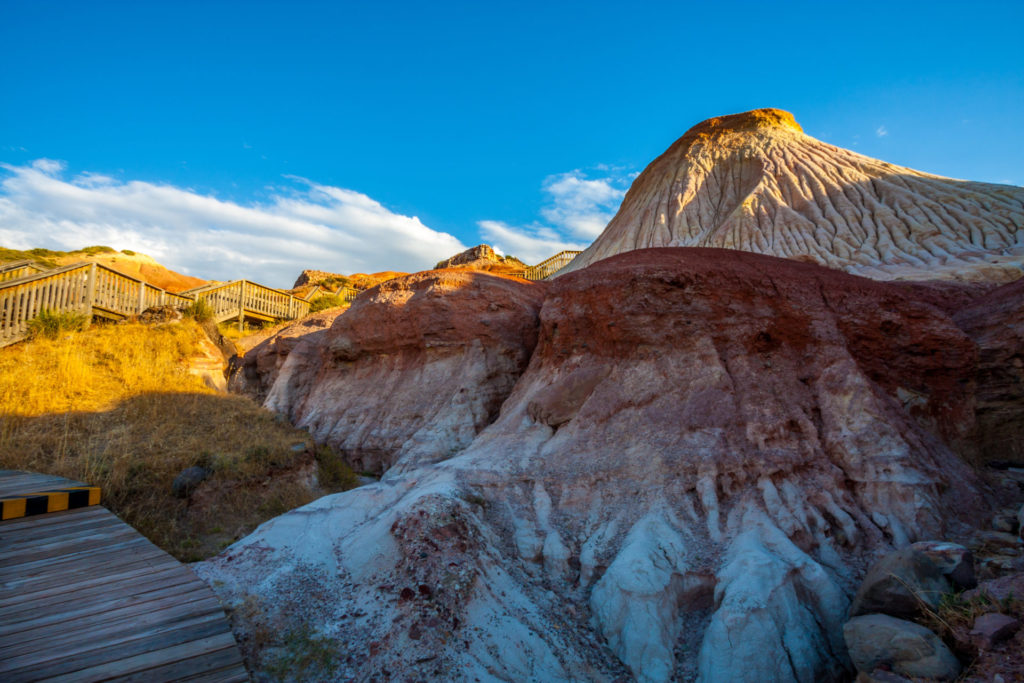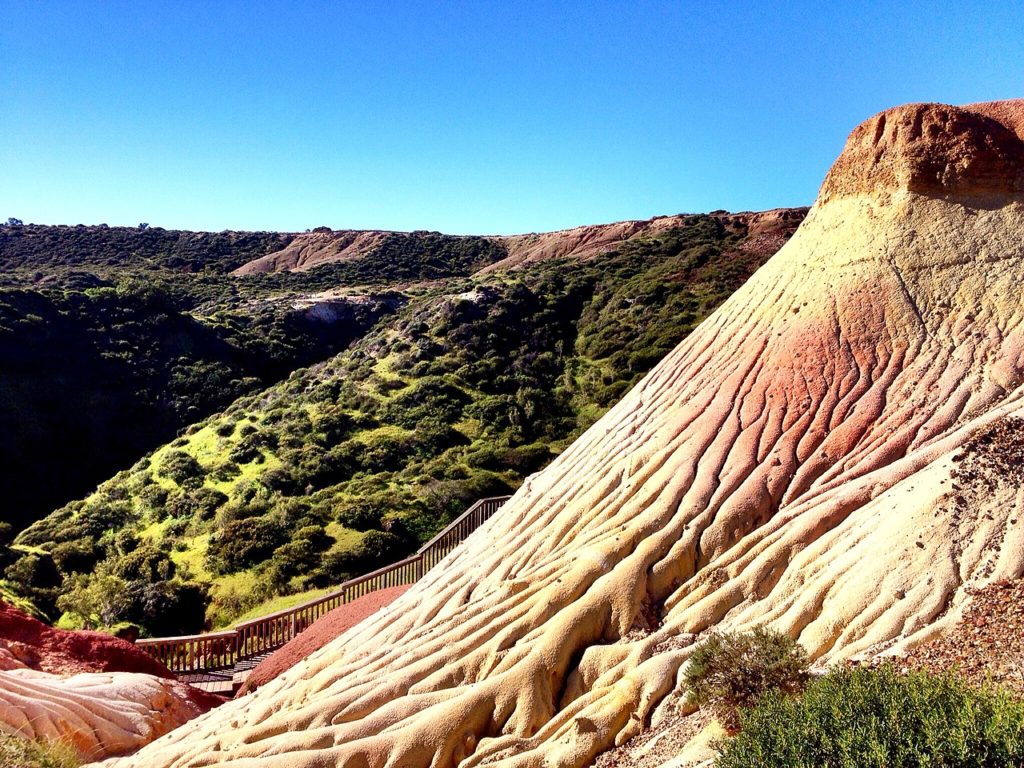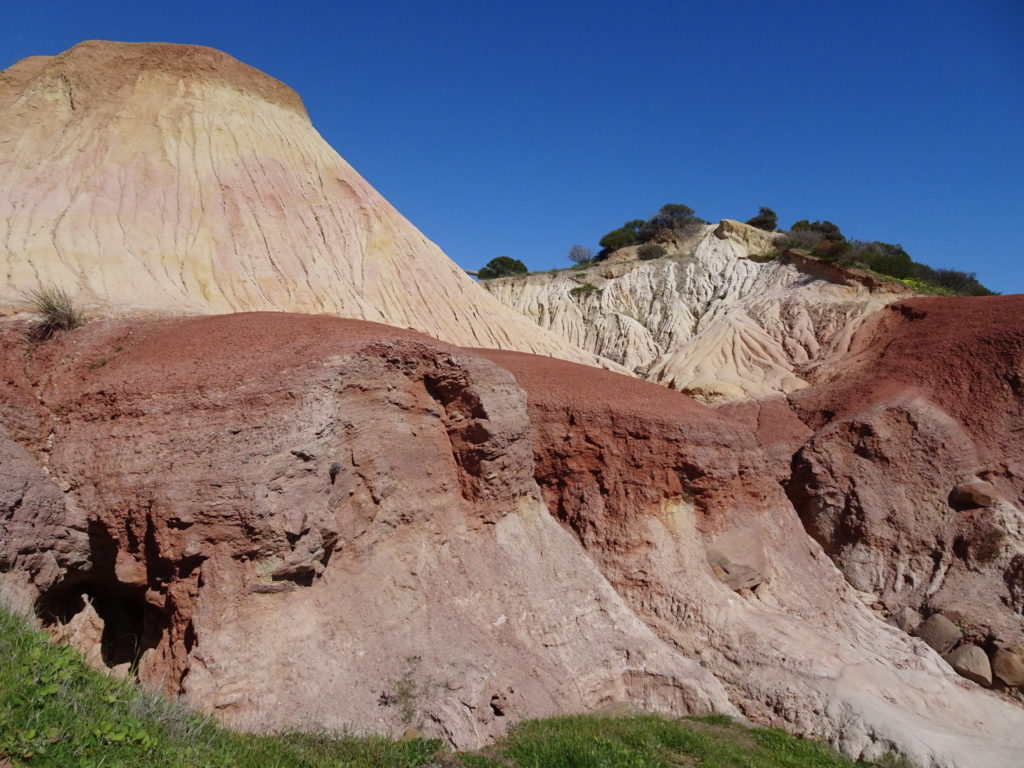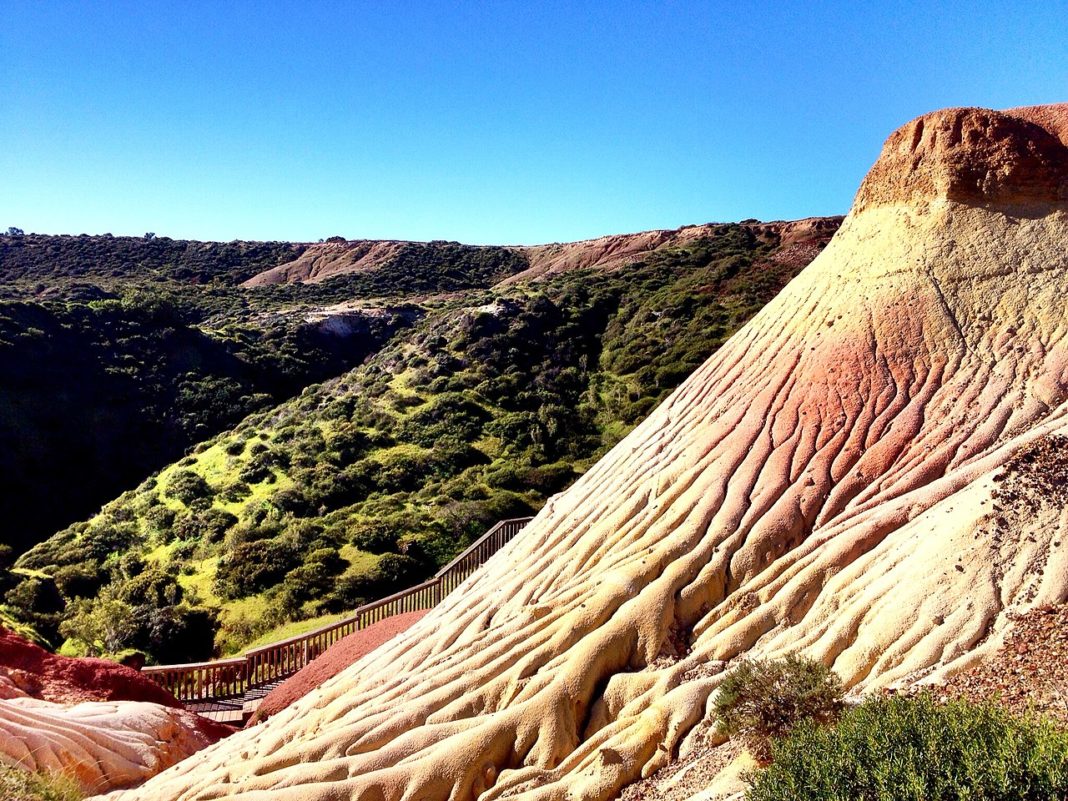The Sugarloaf in Hallett Cove Conservation Park is a cone-shaped hill that’s famous for its geological significance. The Sugarloaf is a large glacial erratic, which is a rock that differs in composition from the bedrock on which it rests. It is a prominent feature in the landscape and serves as a reminder of the area’s glacial history.

The Sugarloaf has distinct colored layers that tell the story of its formation. The red layer at the base is made of boulders and sediment left by the ancient glacial lake. The middle white layer consists of lighter-colored sands that filled the space left by the melted glacier.

The geological landscape of Hallett Cove Conservation Park is characterized by its unique glacial pavements, which are amongst the best examples of their kind in Australia. These pavements consist of smooth rock surfaces with parallel grooves and scratches, known as striations, caused by the movement of glaciers over the land millions of years ago.

The geological features found in the park provide valuable insights into the Earth’s past climate and environmental conditions. They offer scientists and visitors alike an opportunity to study and appreciate the forces that have shaped the landscape over millions of years.
In addition to the Sugarloaf and glacial pavements, the geological landscape of Hallett Cove Conservation Park includes other features such as sea caves, coastal cliffs, and rocky beaches. These features contribute to the park’s scenic beauty and make it a popular destination for both geological enthusiasts and nature lovers alike.
According to the Internet















